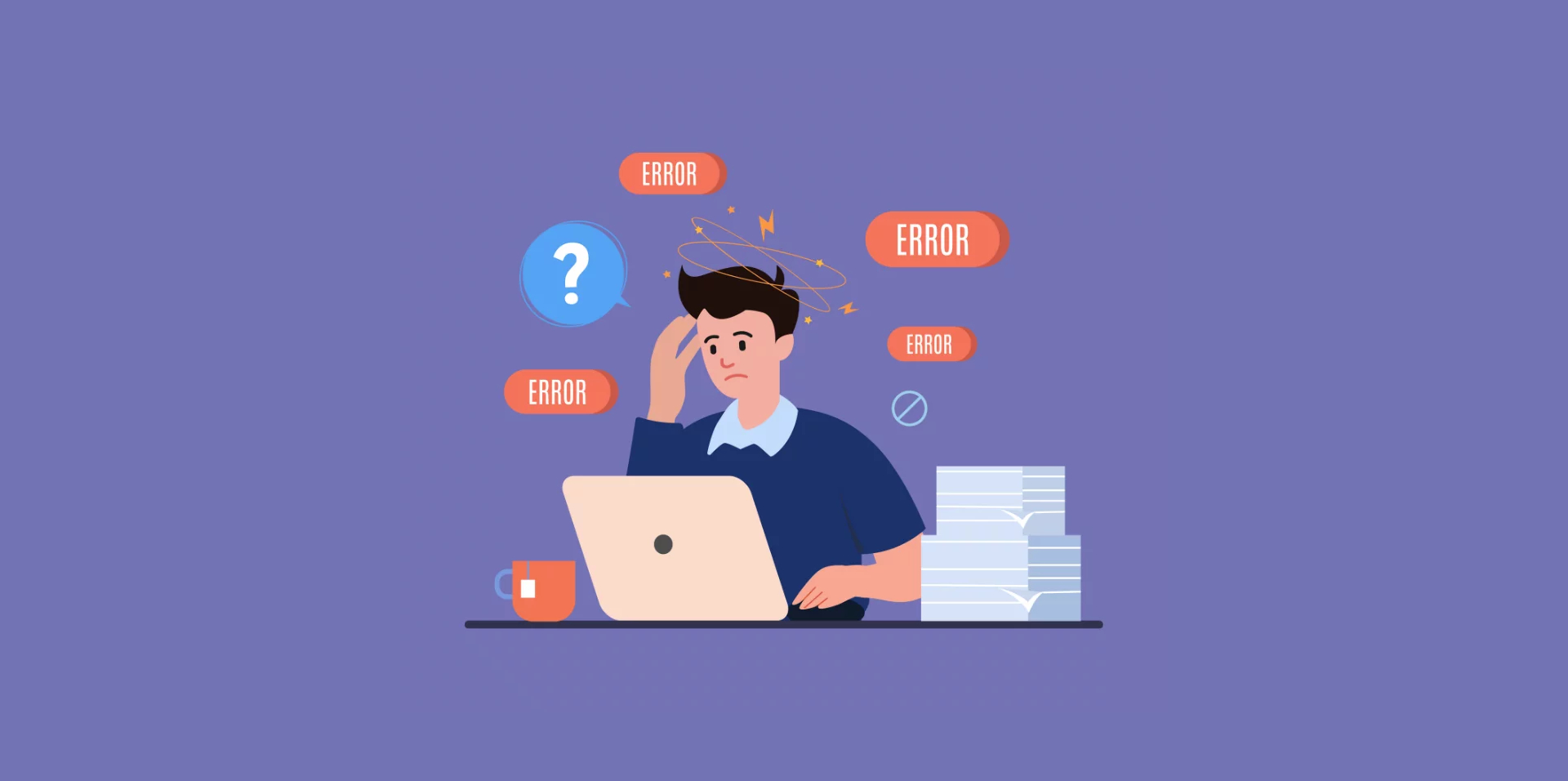If you want to create a successful website, you must steer clear of common design blunders. Avoiding these mistakes will help you attract and retain visitors, ultimately leading to better engagement and conversion rates.
So, let’s dive into the top 6 website design mistakes you need to avoid to ensure your website is user-friendly and effective.
Common website design mistakes
In your web design journey, it’s crucial to begin by understanding the common mistakes to avoid. Failing to prioritise mobile responsiveness can lead to a significant loss of potential visitors. Your website must seamlessly adapt to various screen sizes and devices.
Neglecting the importance of clear navigation can frustrate users and lead to high bounce rates. Ensure that visitors can easily find the information they’re looking for.
Overloading your website with excessive visual elements and content can overwhelm visitors and slow down loading times. It’s important to strike a balance and prioritise quality over quantity.
Ignoring the significance of search engine optimisation can hinder your website’s visibility and reach on Google. Incorporating relevant keywords and optimising meta tags is essential for driving organic traffic.
1. Lack of Clear Purpose
To avoid the web design mistake of lacking a clear purpose, ensure that your visitors understand the primary goal of your website within seconds of landing on the homepage. Your website should immediately communicate what it’s about and what action you want visitors to take. Here are three key elements to consider:
- Clear Messaging: Use concise and compelling language to convey the purpose of your website. Clearly state what you offer and how it benefits your visitors.
- Call-to-Action: Include a prominent call-to-action that guides visitors on what to do next. Whether it’s making a purchase, signing up for a newsletter, or contacting you, the call-to-action should be clear and easily accessible.
- Visual Hierarchy: Arrange your content and design elements in a way that directs attention to the most important elements, such as the primary purpose of your website.
2. Poor Navigation
When designing your website, ensure that every page has a clear and intuitive navigation system to help users easily find the information they’re looking for. You want to provide a seamless user experience for your customers, not a frustrating one.
Avoid using complex navigation structures or burying important links deep within your website. Instead, opt for a simple and consistent navigation menu that’s prominently displayed on each page. Use descriptive labels for your menu items and ensure that they’re logically organised.
Consider implementing a search bar to allow users to quickly find specific content. By prioritising user-friendly navigation, you can improve the overall user experience and keep visitors engaged on your website.
3. Slow Page Load Times
Ensure your website loads quickly. You want a fast, responsive website to keep website visitors from abandoning your site. Slow page load times can drive potential customers away and harm your search engine rankings. To avoid this, consider the following:
- Optimise Images: Compress and resize images to reduce their file size without compromising quality.
- Minimise HTTP Requests: Combine files and reduce the number of elements on each page to minimise HTTP requests.
- Use Caching: Implement browser caching and server-side caching to store static files and reduce server load.

4. Inconsistent Branding
Your website’s inconsistent branding can confuse visitors and weaken the overall impact of your brand message. When your website lacks consistency in colours, fonts, logos, and messaging, it can create a disjointed and unprofessional impression. This can lead to a lack of trust and credibility among your audience.
Inconsistent branding can also make it difficult for visitors to recognise and remember your brand, hindering its effectiveness in the long run. To avoid this mistake, ensure that your branding elements are cohesive across all web pages. Use the same colour scheme, typography, and logo placement to create a unified brand experience.
Consistent branding helps to reinforce your brand identity and convey a sense of professionalism and reliability to your visitors.
5. Lack of Mobile Optimisation
To ensure your website is accessible and user-friendly for all visitors, it’s crucial to optimise it for mobile devices. Mobile optimisation is essential to provide a seamless browsing experience with the increasing use of smartphones and tablets. Here are three key aspects to consider:
- Responsive Design: Ensure that your website layout adapts to different screen sizes, maintaining functionality and aesthetics across various devices.
- Fast Loading Speed: Mobile users expect quick access to information. Optimise images, minimise code and leverage browser caching to improve loading times.
- Mobile-Friendly Content: Tailor your content for mobile consumption by using concise, easy-to-read text and optimising multimedia for smaller screens.
6. Ignoring Accessibility
One of the most common web design mistakes is ignoring web accessibility. Many website owners fail to consider the diverse needs of users with disabilities, such as visual, auditory, and motor impairments. By neglecting accessibility, you limit the ability of these individuals to access and navigate your website.
Simple design choices, like using alt text for images or ensuring proper colour contrast, can make a world of difference for users with disabilities. Ignoring website accessibility not only excludes a significant portion of your potential audience but also puts you at risk of legal action for non-compliance with accessibility standards. Prioritising accessibility in your website design ensures inclusivity and a better user experience for all visitors.
Web Design Mistakes
In conclusion, it’s essential to avoid these common website design mistakes if you want your website to run smoothly and successfully. At britweb, our team of professional web designers and developers are experts at creating fast, accessible, responsive websites. If you’d like to level up your web design, please contact us for a free, no-obligation quote.
Frequently Asked Questions
How Can I Ensure I Exercise Brand Consistency?
To ensure your website design reflects your brand consistently, focus on using your brand’s colours, fonts, and imagery. Maintain a cohesive style across all pages and elements to create a strong and recognisable brand presence.
What Accessibility Issues Are Often Overlooked?
When designing websites, designers often overlook common accessibility issues. These include inadequate colour contrast, lack of alt text for images, and non-descriptive link text. It’s important to address these to ensure inclusivity.
How Can I Improve Navigation?
To improve website navigation for a better user experience, organise your menu logically, use clear and descriptive labels, provide search functionality, and include breadcrumbs for easy backtracking. Try to avoid a cluttered layout, as this can easily confuse any website visitor. Also, ensure that links and buttons are easily clickable.
How Can I Optimise For Mobile Without Compromising the desktop experience?
To optimise your website for mobile devices without compromising the desktop experience, focus on responsive design. Use flexible grids and layouts to ensure that your content adjusts seamlessly to different screen sizes, providing a consistent user experience.
Why Shouldn’t I Ignore Clear Purpose in my Website Design?
Ignoring the importance of a clear purpose in website design can lead to confusing user experiences, high bounce rates, and low conversion rates. You risk losing potential customers and damaging your brand’s credibility.
